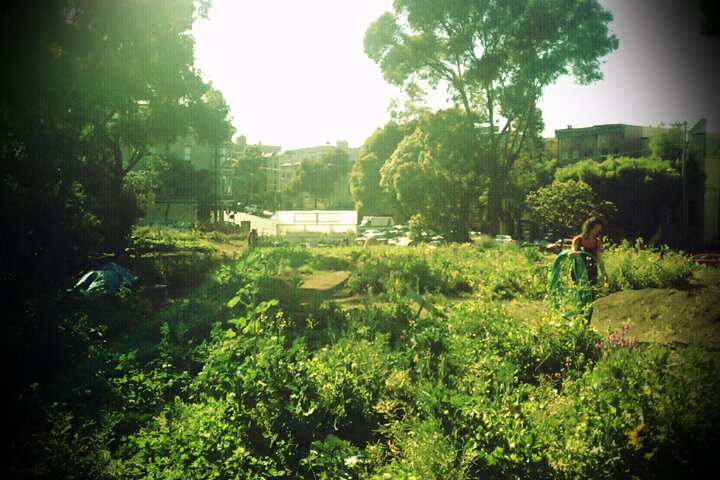
[ Hayes Valley Farm ] was a 3 year collaboration between socially engaged artists, neighbors, city agencies, permaculture gardeners, community organizers, chefs, ecologists, researchers and city residents on the former on and off ramp in the Hayes Valley neighborhood of San Francisco. The Loma Prieta earthquake shook apart the on and off ramps in 1989 and created hill like edges on 2.5 acres of land — sculpturally and ecologically compelling. Early on, many of us recognized that the scope and level of participation was so great that it required resilient and distributed modes of engagement between humans and between humans and non humans. This recognition was followed by a sweeping shift in the practice of conflict and a deep inter-relational exploration of what it means to manage resources and practice an urban commons.
I was involved in daily cultivation practices that collapsed the binaries of food/ not food, civilization/ wilderness. The greenhouse at Hayes Valley Farm was collaboratively managed with dedication to bio-intensive processes that included planting by the moon. I lived across the street and so in addition to the ongoing conflict-work and research on decolonizing practices in the urban commons, I actively researched intersections of medicinal, edible and beneficial plants that thrived in the Hayes Valley microclimate and bourgeoning soil. As a way of keeping some information hyper local and inter-relational, I developed sets of signs all over the farm using handmade graffiti tags.
Photograph by Zoey Kroll
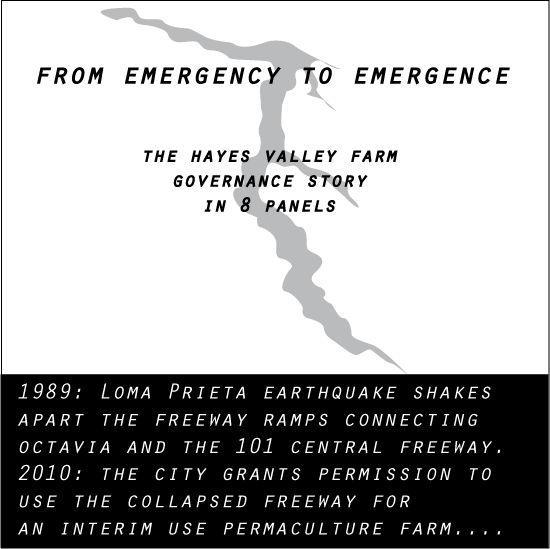
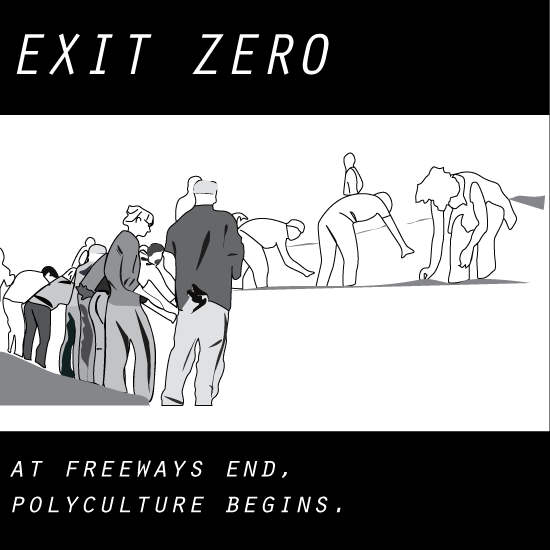
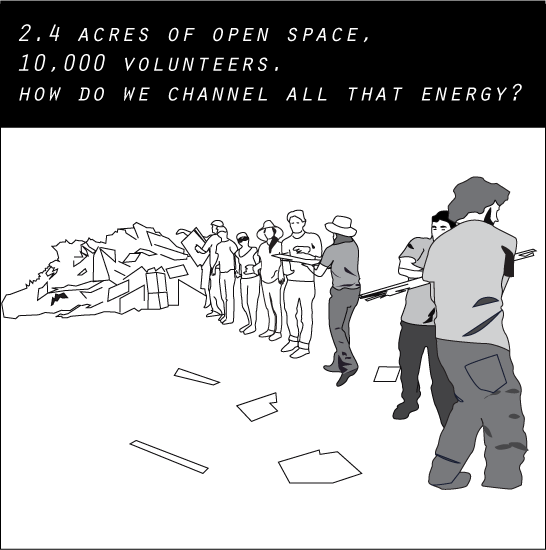
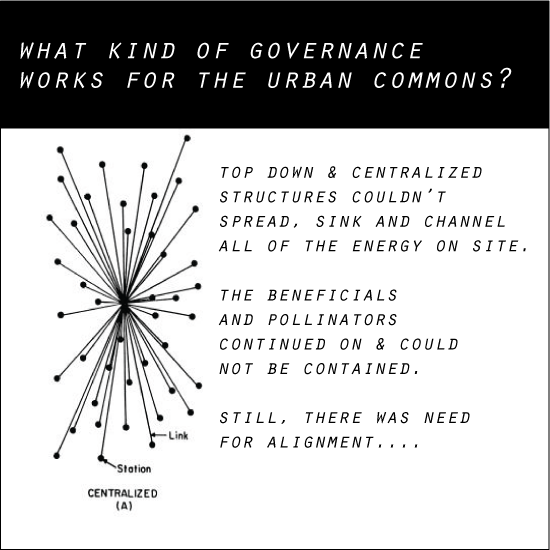
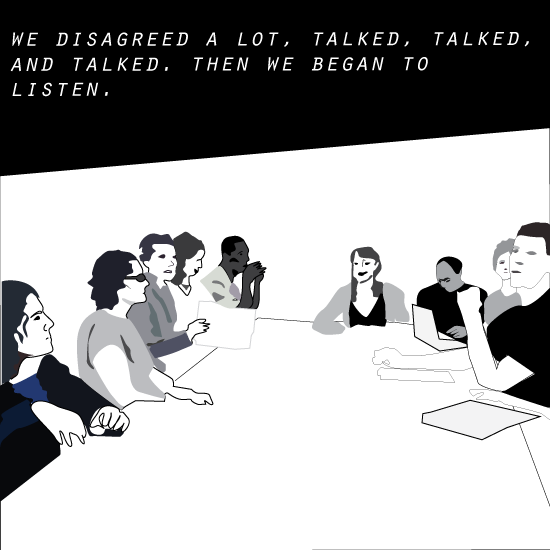
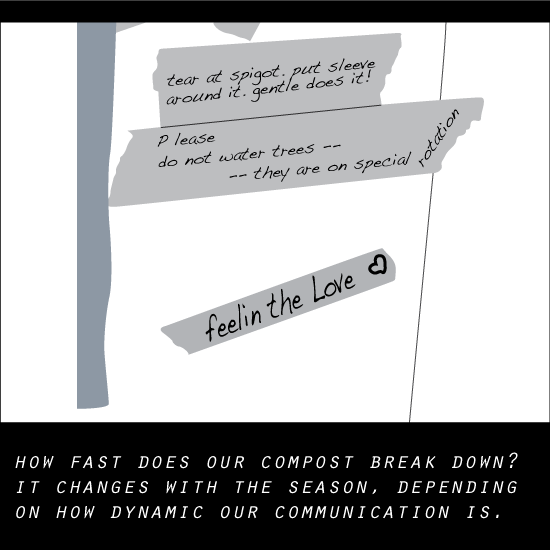
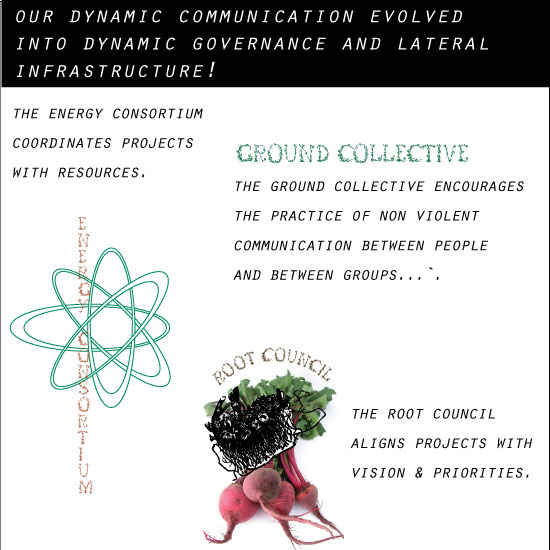

comic by Margaretha Haughwout and Zoey Kroll
Conflict and the Commons :: Hayes Valley Farm
[ Hayes Valley Farm ] was a 3 year collaboration between socially engaged artists, neighbors, city agencies, permaculture gardeners, community organizers, chefs, ecologists, researchers and city residents on the former on and off ramp in the Hayes Valley neighborhood of San Francisco. The Loma Prieta earthquake shook apart the on and off ramps in 1989 and created hill like edges on 2.5 acres of land — sculpturally and ecologically compelling. Early on, many of us recognized that the scope and level of participation was so great that it required resilient and distributed modes of engagement between humans and between humans and non humans. This recognition was followed by a sweeping shift in the practice of conflict and a deep inter-relational exploration of what it means to manage resources and practice an urban commons.
I was involved in daily cultivation practices that collapsed the binaries of food/ not food, civilization/ wilderness. The greenhouse at Hayes Valley Farm was collaboratively managed with dedication to bio-intensive processes that included planting by the moon. I lived across the street and so in addition to the ongoing conflict-work and research on decolonizing practices in the urban commons, I actively researched intersections of medicinal, edible and beneficial plants that thrived in the Hayes Valley microclimate and bourgeoning soil. As a way of keeping some information hyper local and inter-relational, I developed sets of signs all over the farm using handmade graffiti tags.
Photograph by Zoey Kroll
comic by Margaretha Haughwout and Zoey Kroll